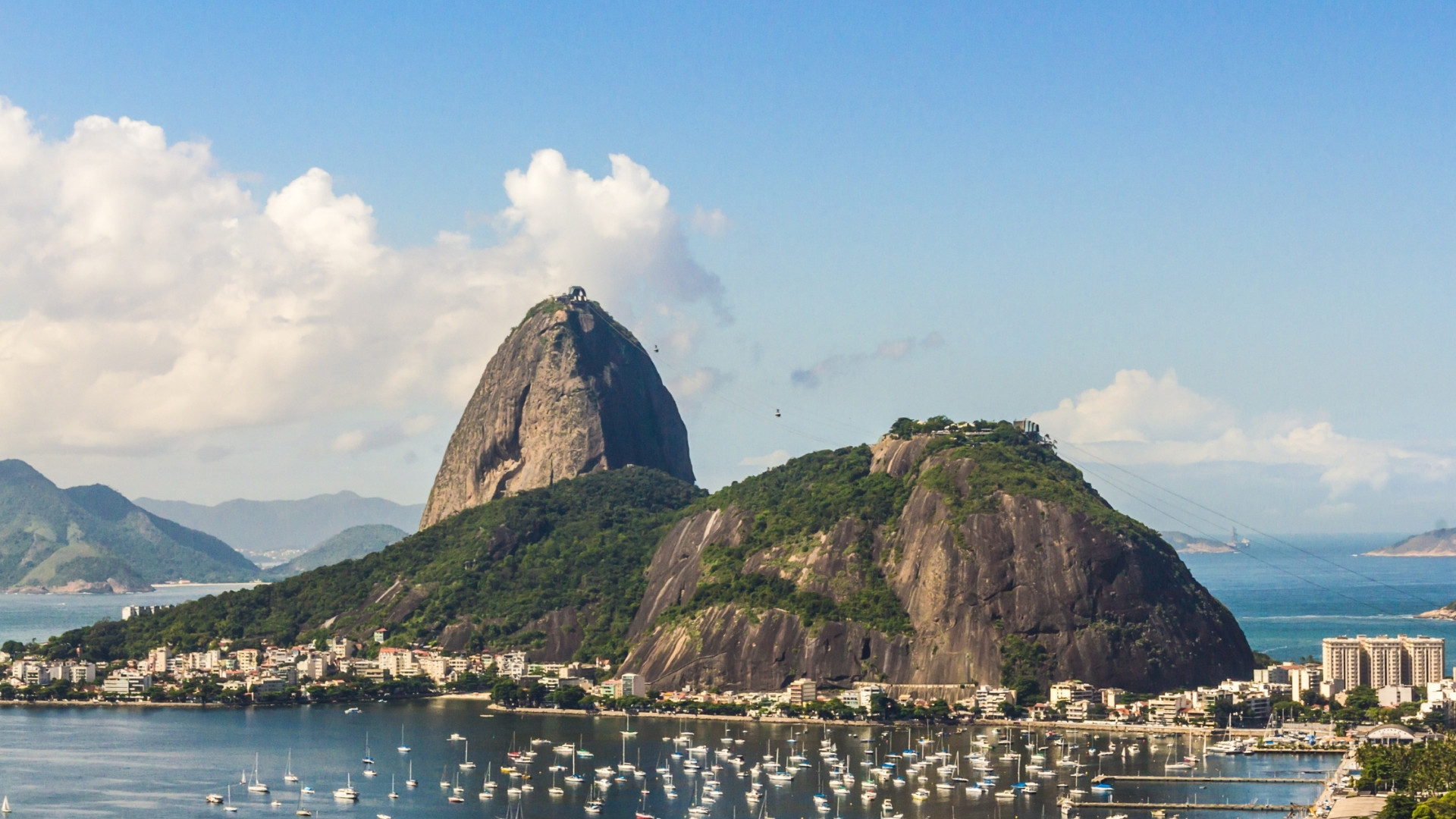
Standing at the edge of Guanabara Bay, Sugarloaf Mountain isn’t just a postcard image – it’s Rio’s soul captured in stone. Nothing quite matches that moment when the cable car crests the final rise and Rio unfolds before you like a dream – blue waters, lush mountains, and the pulsing city all colliding in one perfect panorama.
Highlights:
- Dangle above the Atlantic in glass-walled cable cars as seagulls glide below and the city sprawls into the distance
- Snap that once-in-a-lifetime shot where Copacabana curves like a smile beneath you and Christ the Redeemer watches from afar
- Linger for sunset when the city transforms into a galaxy of twinkling lights and the mountains fade to purple silhouettes against the darkening sky
Tickets & Prices
Skip the hassle and book your tickets online – trust me on this one. The queues at Av. Pasteur ticket office can eat up precious vacation time, especially during high season. If you do buy onsite, have your passport ready (they’re strict about ID). The standard ticket gets you the full experience: two cable car rides with that essential stop at Morro da Urca before the final ascent to Sugarloaf’s summit.
The whole journey only takes about 6 minutes of actual travel time, but you’ll want hours to explore. Cable cars leave every 20 minutes or so, packed with excited visitors (65 max per car). My advice? Head up early or late to avoid the midday crush.
Tours
I’ve tried both solo visits and guided tours to Sugarloaf, and honestly, for first-timers to Rio, the combo tours offer serious bang for your buck. You’ll find several options bundling Sugarloaf with Rio’s greatest hits – Christ the Redeemer (obviously), those colorful Selarón Steps you’ve seen on Instagram, and the impressive Metropolitan Cathedral.
Most tours run 6-9 hours, picking you up from your hotel (but double-check your zone is covered), with guides who actually know their stuff. The good ones throw in an all-you-can-eat Brazilian lunch that’ll have you trying things you can’t pronounce but won’t forget. Just book ahead – nothing worse than watching those tours fill up while you’re still deciding.
Opening Hours
The cable cars run daily from 8 AM till 9 PM, with the final trip up leaving at 8:40. This generous schedule is one of Sugarloaf’s biggest perks – you can catch the mountain in totally different moods throughout the day. I’ve been at sunrise when the light is soft and golden, and at nightfall when Rio sparkles like scattered diamonds below.
July and December through February get swamped, especially during the magic sunset hour when everyone and their selfie stick crowds the western platforms. Want the place almost to yourself? Try a Tuesday or Wednesday morning in the off-season – I once shared a cable car with just four other people!
What to See and Do
There’s way more to Sugarloaf than just standing at viewpoints (though honestly, that alone would be worth it).
The Cable Car Experience
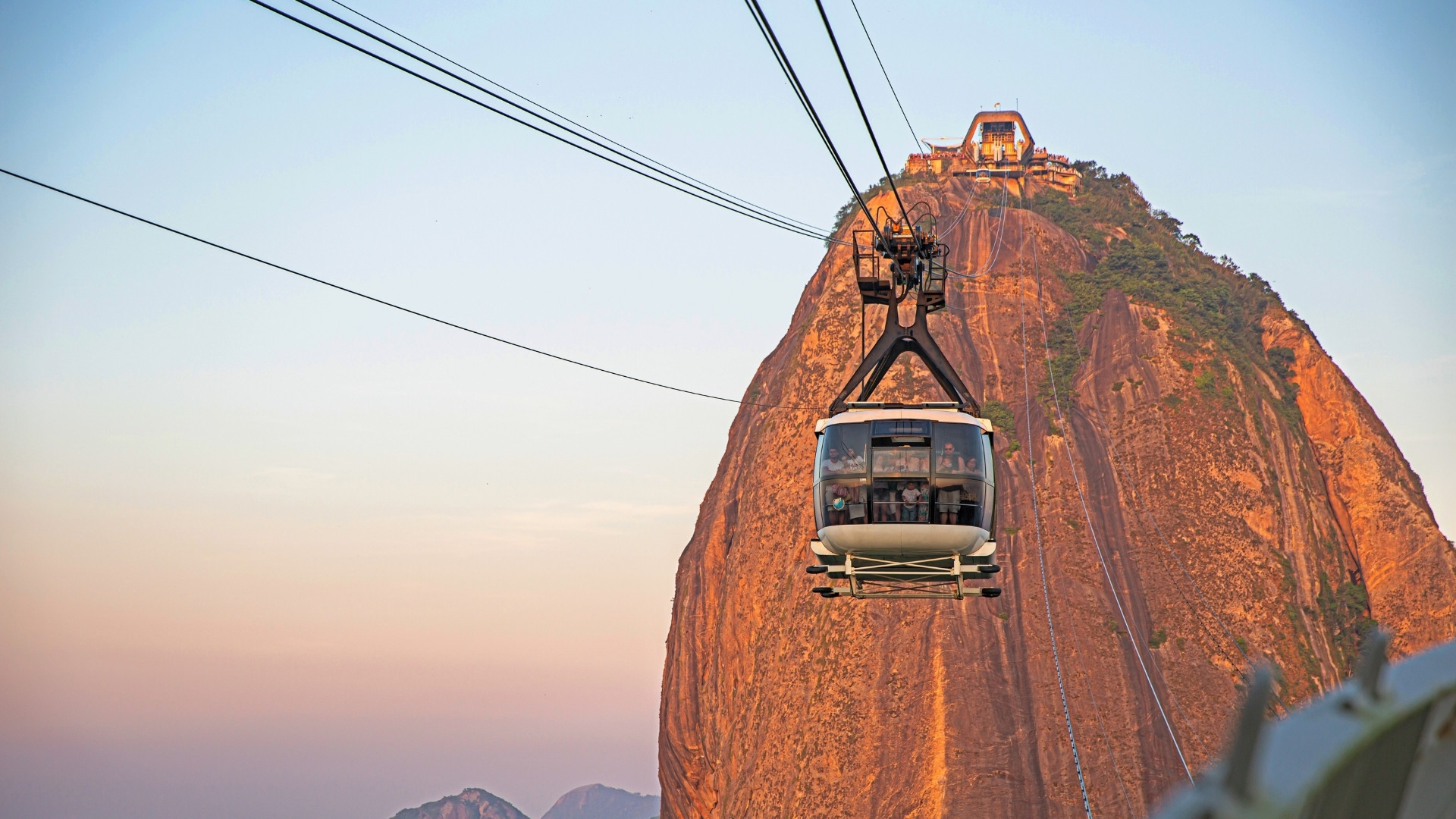
Locals call it the “bondinho,” and it’s as much about the journey as the destination. The system works in two stages – first from Praia Vermelha to Morro da Urca (that’s the smaller hill at 220 meters), then a second leg up to Sugarloaf’s summit at nearly 400 meters.
The cars themselves are engineering marvels – glass bubbles that rotate slowly as they climb, giving you that coveted 360° perspective. They renovated the whole system back in 2008, so the ride is buttery smooth.
Here’s a trick I learned from a Rio photographer: don’t rush to the front of the queue. Let a few groups go ahead and then try to position yourself at the corners of the cable car. You’ll have glass on two sides for twice the photo ops.
Morro da Urca – The First Stop
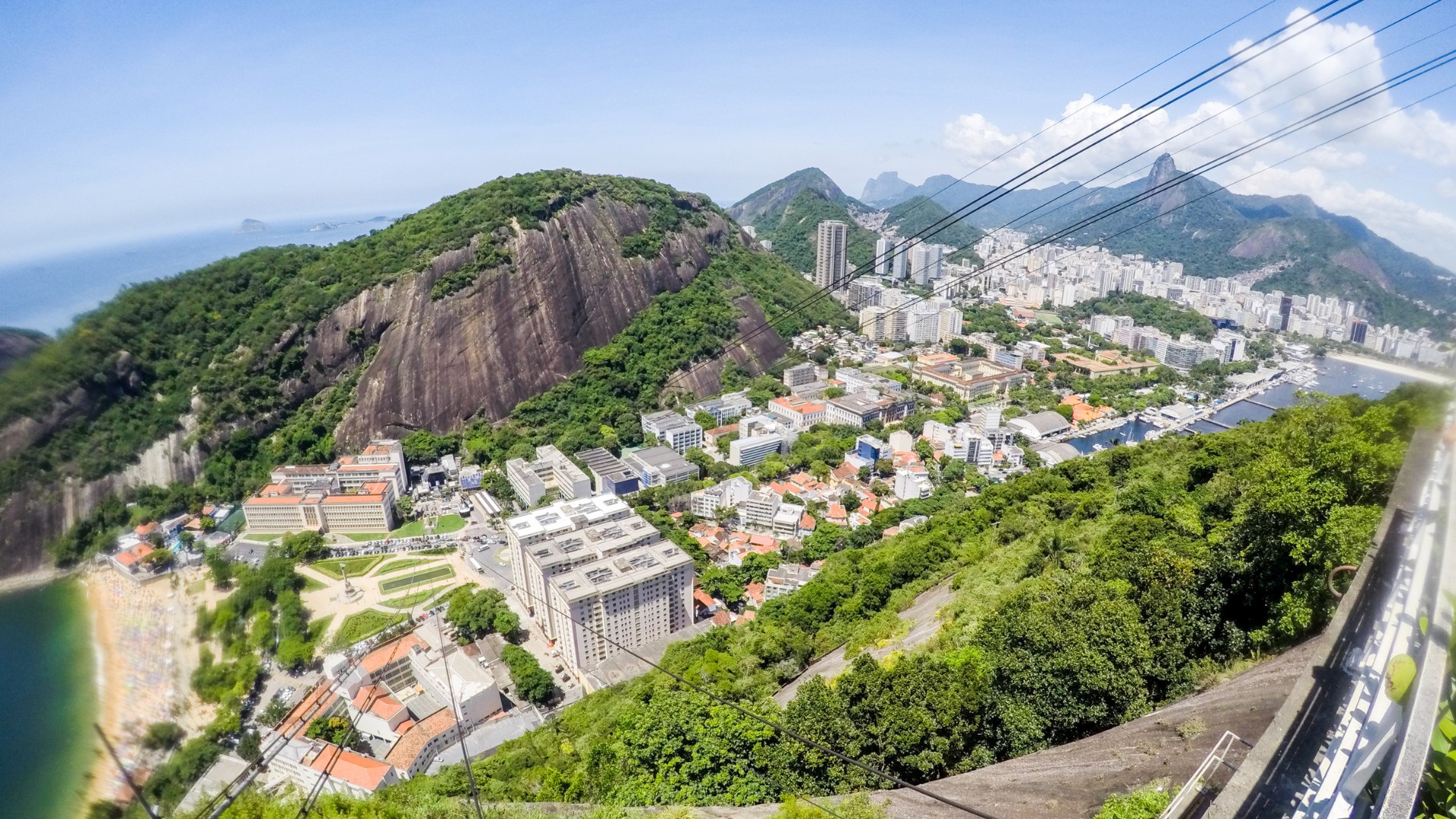
Half the visitors I see make the rookie mistake of treating Morro da Urca as just a transfer point. Big error! This mid-mountain plateau has some of the most perfectly framed views in Rio.
From here, you get Botafogo Bay with its bobbing yachts, and Christ the Redeemer looms larger than it does from the summit. There’s a small amphitheater that’s magical during summer events – I caught an acoustic samba show here once that still gives me goosebumps thinking about it.
Got time constraints? Here’s a local secret: Morro da Urca actually offers better sunset photography than the summit. The angle catches the sun setting behind those jagged mountains while bathing Botafogo in golden light. Plus, most tourists head straight to the top, leaving you with breathing room to set up that perfect shot.
The Summit Experience
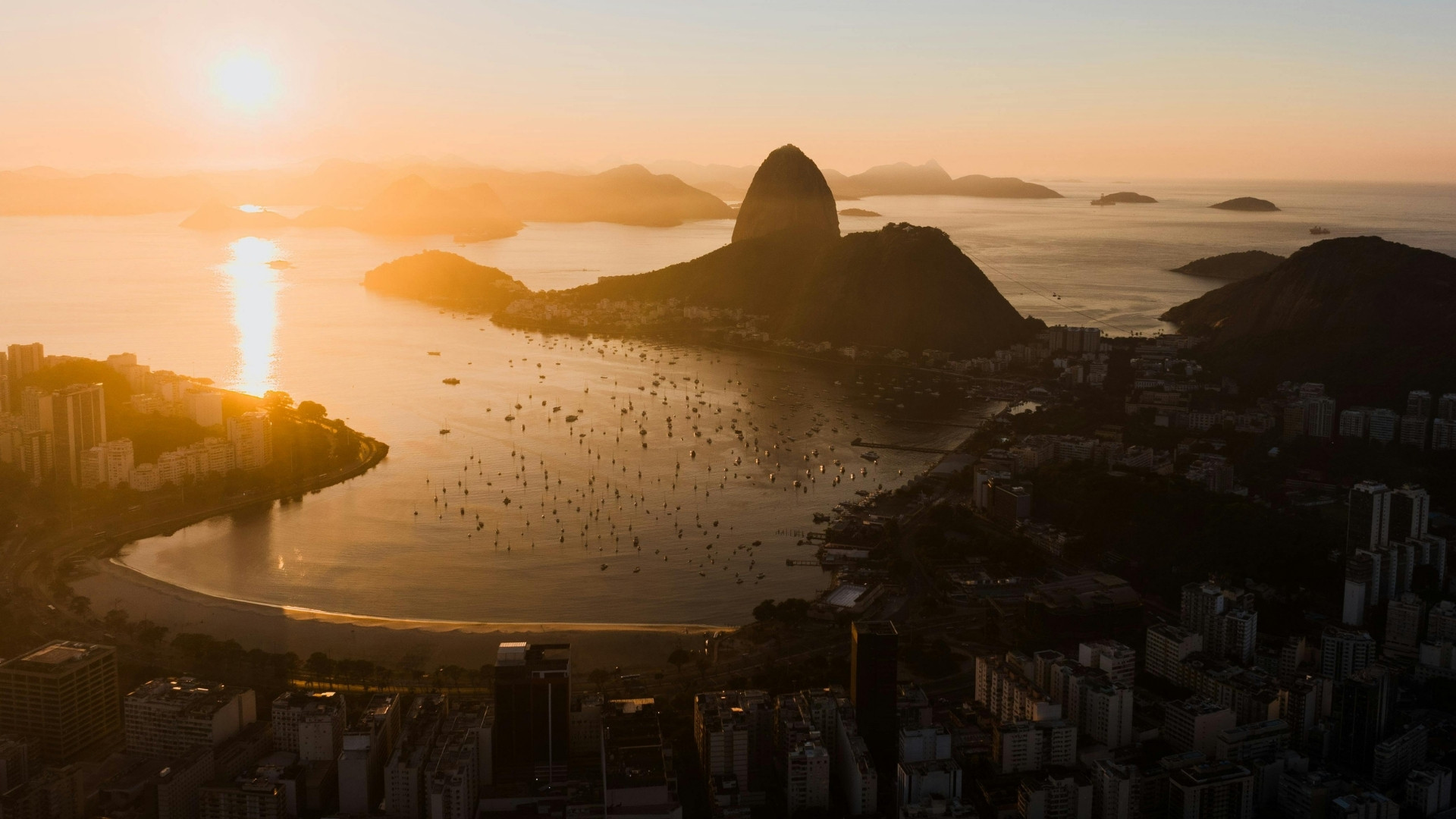
Nothing quite prepares you for that first moment at the top. The entirety of Rio reveals itself – Copacabana and Ipanema stretching like golden ribbons along the Atlantic, the mouth of Guanabara Bay guarded by mountains, and the endless cityscape cradled by jungle-covered peaks.
They’ve designed the viewing platforms brilliantly, with different levels facing various directions. Those little plaques pointing out landmarks? Actually super helpful when you’re trying to figure out which beach is which (they start to blur together after a while).
I’ve visited at different times of day, and the mountain has a split personality. Morning brings sharp clarity where you can count the buildings in Copacabana. Afternoon bathes everything in warm light that photographers dream about. After dark? Pure magic as Rio becomes a constellation below you.
Hiking Trails
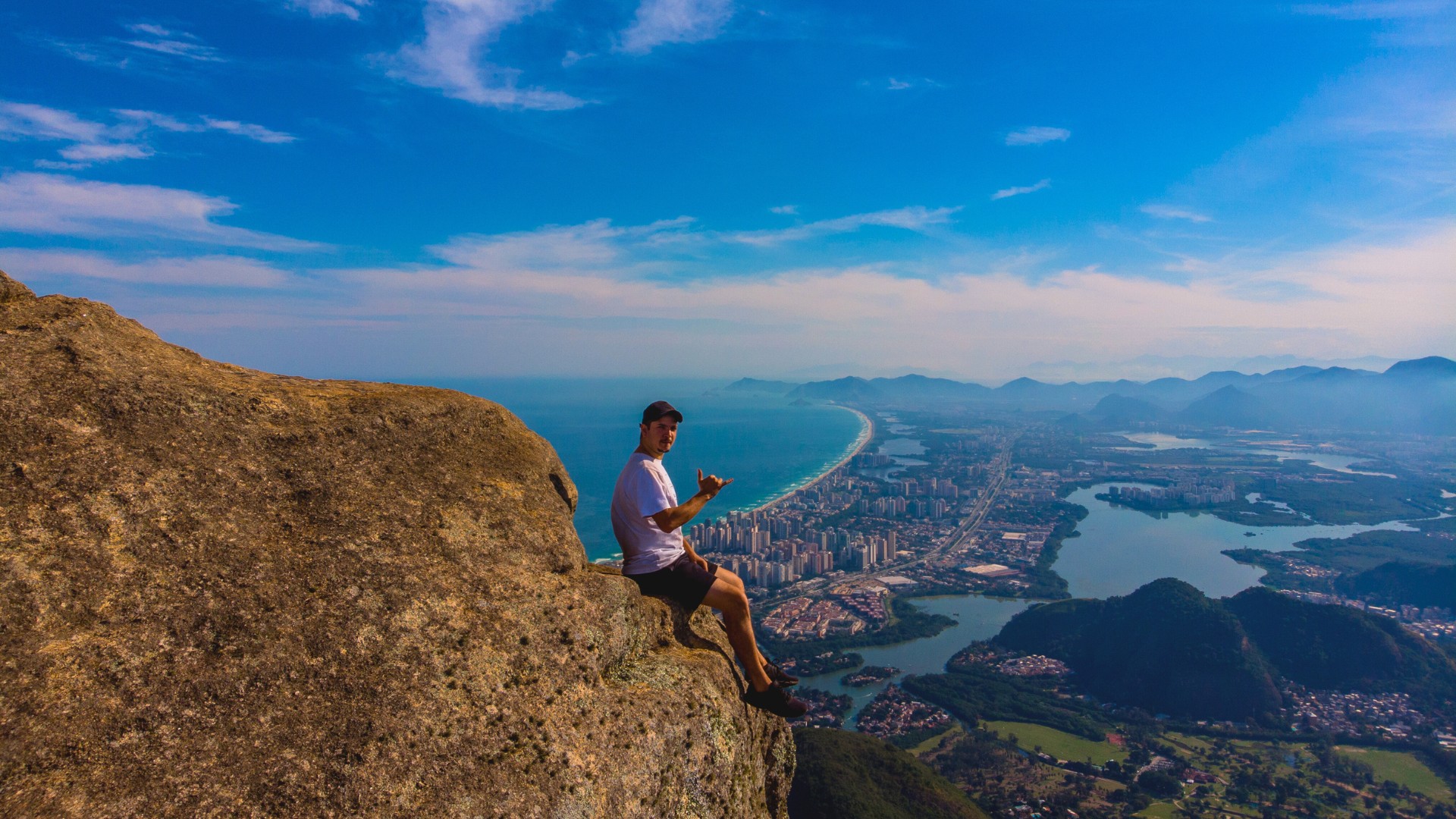
When my legs need stretching after a long flight to Brazil, I head straight for the Pista Cláudio Coutinho trail. This 1.2km paved path hugs the mountain’s base along the shoreline, offering cool ocean breezes and wild encounters. Last time, a family of marmoset monkeys followed me for nearly ten minutes!
For the adventurous souls with climbing experience, Sugarloaf offers over 40 official routes up its granite face. You’ll need proper gear and preferably a guide, but imagine telling people you climbed Sugarloaf instead of taking the cable car!
If you’re hitting the trail, get there around 7 AM. The morning light is gorgeous, temperatures haven’t reached sweat-inducing levels yet, and wildlife is at its most active. I’ve spotted toucans, lizards, and those adorable monkeys all before most tourists have finished their breakfast.
Photography Opportunities
I’ve burned through entire memory cards at Sugarloaf without regret. The mountain offers an embarrassment of photographic riches – dramatic cityscapes, natural beauty, and atmospheric light conditions that change hourly.
Three spots stand out for must-take photos:
- The north-facing platform where Christ the Redeemer poses majestically above the urban sprawl
- The east-facing viewpoint that captures Copacabana’s perfect curve from above
- The west-facing sunset spot where the sun melts into the mountains behind Ipanema
Don’t get so caught up in landscapes that you forget the human element. My favorite Sugarloaf photo remains my partner silhouetted against the evening cityscape – a perfect “I was here” moment.
Dining Options
After all that exploring, you’ll work up an appetite that the mountain happily satisfies. The Clássico Café at the summit does surprisingly good food for a tourist spot – their pão de queijo (cheese bread) pairs perfectly with strong Brazilian coffee.
Down at Morro da Urca, Bar Abençoado serves up ice-cold beers and caipirinhas that taste even better with that backdrop. For something more substantial, the restaurant there does decent Brazilian classics, though admittedly you’re paying for that million-dollar view.
A money-saving hack from a budget traveler: Grab picnic supplies from a local market before heading up. The area near the summit has plenty of comfortable spots to spread out and enjoy a DIY lunch with the best backdrop in Brazil.
Shopping for Souvenirs
Both Morro da Urca and the summit have those expected souvenir shops, but they’re actually better than your average tourist trap. Besides the standard magnets and t-shirts, look for the hand-painted watercolors of the mountain – local artists often capture Sugarloaf’s essence better than any photograph.
My prized possession? A miniature replica of the cable car system I found only at the summit shop. They also offer a unique postmark service where they’ll stamp your postcards with a special Sugarloaf seal – way cooler than a regular Rio postmark for the folks back home.
Events and Special Activities
If you’re lucky enough to visit during summer (December-February), check if any events are happening at Morro da Urca’s amphitheater. I’ve seen everything from classical quartets to Brazilian rock bands performing against that backdrop.
The New Year’s celebration deserves special mention – they sell tickets to watch Copacabana’s legendary fireworks display from above. Yes, it’s expensive (like, really expensive), but seeing those explosions of color from a bird’s-eye view is genuinely bucket-list material. Book months ahead if this interests you – it sells out faster than concert tickets.
Directions
Getting to Sugarloaf couldn’t be easier. It sits in Rio’s Urca neighborhood at Av. Pasteur, 520. From Copacabana, hop on buses 511, 512, or 513 and you’re dropped practically at the entrance. Coming from Ipanema? Take Metro Line 1 to Botafogo and switch to one of those buses.
I’ve tried all the options, and honestly, ride-sharing apps work beautifully in Rio – usually cheaper than traditional taxis and without the language barrier of explaining your destination.
If you’ve rented a car (brave soul!), there’s parking available, but it fills early. The traffic getting there can be nightmarish during peak hours, so public transport often wins for convenience.
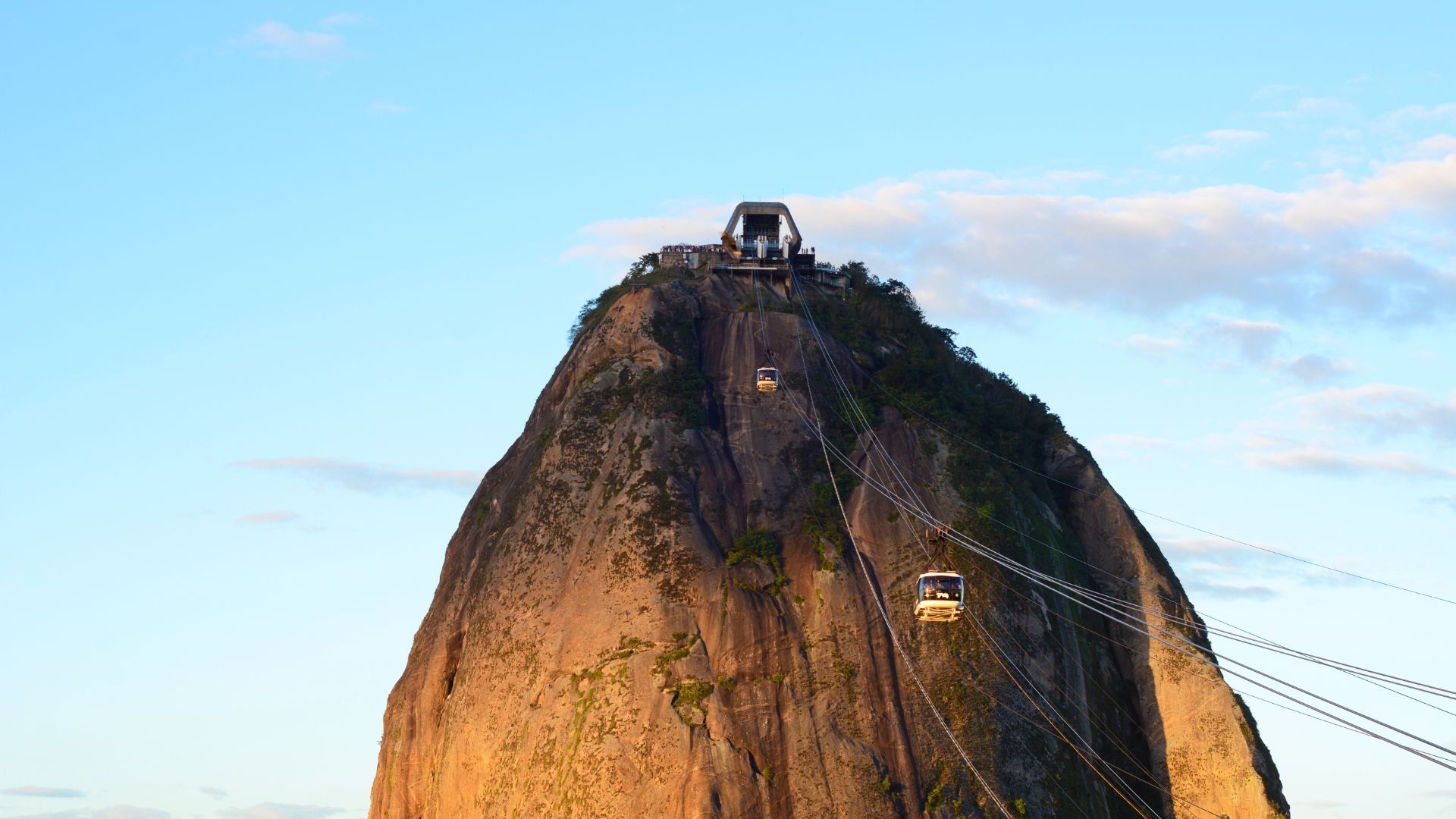
Nearby Places
Praia Vermelha: I stumbled on this hidden gem by accident my first visit. This compact beach with its distinctive reddish sand sits right at Sugarloaf’s base. After the crowds up top, the relatively peaceful shore feels like a secret discovery, with the added bonus of that perfect Sugarloaf photo op from below.
Urca: While tourists flock to Copacabana, locals know Urca is where Rio’s authentic charm lives. Wander its quiet streets lined with colonial buildings, then join cariocas (Rio natives) at the Urca Wall at sunset. Grab a beer from a nearby vendor, perch on the wall, and watch local life unfold as the sky changes colors – pure Rio magic.
Copacabana Beach: Just minutes from Sugarloaf lies Rio’s most famous stretch of sand. Beyond the obvious beach appeal, take time to appreciate the iconic wave-patterned promenade – those black and white Portuguese stones have inspired designers worldwide. The people-watching alone is worth the trip.
Forte Duque de Caxias: Most visitors miss this military fort at Leme’s far end, which is a shame. The short hike up rewards you with a completely different perspective of Sugarloaf across the bay. Plus, there’s usually a fraction of the crowds you’ll find at the more famous viewpoints.
Botafogo Beach: Skip swimming here (locals certainly do), but don’t miss the sunset view. The way Sugarloaf Mountain reflects in Botafogo Bay’s still waters has inspired countless paintings and photographs. Grab a coconut water from a beach vendor and join the after-work crowd watching the mountain change colors.
Did you know that: (5 Interesting Facts!)
- That distinctive name “Sugarloaf” came from 16th-century Portuguese colonizers who thought the mountain resembled the conical clay molds used to transport sugar back to Europe. Locals still call it “Pão de Açúcar” – literally “bread of sugar.”
- When the first cable car opened in 1912, it was considered a technological marvel and one of the first aerial tramways anywhere in the world. Locals initially feared riding in it, leaving mostly adventurous tourists to test their luck!
- Movie buffs might recognize Sugarloaf from the 1979 James Bond film “Moonraker,” where Roger Moore battled the steel-toothed villain Jaws atop a moving cable car. The scene terrified viewers but ironically boosted tourism to the mountain.
- Despite its standalone appearance, Sugarloaf isn’t a single mountain but part of a geological formation that includes multiple peaks of granite and quartz. The whole complex dates back roughly 600 million years – predating dinosaurs by hundreds of millions of years.
- The tiny marmoset monkeys that charm visitors aren’t actually native to the area. They were introduced decades ago and thrived in this protected environment. They’ve become so used to humans that rangers constantly battle to prevent visitors from feeding them, which can cause serious health problems for these little creatures.
History
- 1500s: Portuguese sailors nickname the mountain “Pão de Açúcar” after spotting its distinctive cone shape resembling sugar loaf molds used in the booming sugar trade.
- 1817: British explorer Maria Graham makes history as one of the first women to summit Sugarloaf, documenting her climb in journals that would later fascinate European readers with tales of exotic Brazil.
- 1912: The first section of the cable car system opens on October 27th after years of engineering challenges, immediately becoming a symbol of Rio’s modernization.
- 1913: The complete cable car route reaches the summit, giving access to views previously enjoyed only by ambitious climbers and the birds.
- 1972: The original wooden cable cars are replaced with metal and glass versions, significantly improving safety and visibility for an increasing number of tourists.
- 1979: Sugarloaf achieves global fame when the James Bond film “Moonraker” features a thrilling fight scene atop the cable cars, cementing the mountain’s place in pop culture.
- 2008: A complete overhaul introduces the current rotating cable cars, enhancing the experience with 360-degree views during the journey itself.
- 2012: The centennial celebration of the cable car system attracts global media attention and special exhibitions chronicling the mountain’s role in Rio’s history.
- 2014: The FIFA World Cup brings record-breaking visitor numbers as football fans from around the world make Sugarloaf a must-see between matches.
- 2016: Olympic sailing events use Sugarloaf as their dramatic backdrop, broadcasting Rio’s natural beauty to billions of viewers worldwide and sparking a tourism boom.
FAQ
How long should I plan to spend at Sugarloaf Mountain?
You’ll need at least 2-3 hours to do Sugarloaf justice. I spent almost a full day my first visit! Give yourself time to explore both Morro da Urca and the summit, take those Instagram-worthy photos from different angles, and maybe enjoy a leisurely drink while soaking in the view. Rush this experience and you’ll regret it later.
What’s the best time of day to visit Sugarloaf Mountain?
I’m a sunset evangelist when it comes to Sugarloaf. Arriving about 2-3 hours before sunset gives you daylight views first, then that magical golden hour, and finally Rio’s twinkling nightscape. If crowds make you twitchy, early morning offers clearer visibility and thinner crowds – plus better lighting for photographers.
Is Sugarloaf Mountain suitable for children and elderly visitors?
Absolutely! I’ve seen multi-generational families having a blast here. The cable cars and viewing platforms accommodate wheelchairs, and there’s minimal walking required unless you choose to explore further. The paths at the top are well-maintained and relatively flat, perfect for strollers or those with mobility concerns.
Can I visit Sugarloaf Mountain when it’s raining?
You can, but should you? The cable cars run in light rain but shut down during thunderstorms (for obvious reasons). The bigger issue is visibility – I once went on a cloudy day and basically paid to see expensive fog. Check the forecast and be flexible with your plans. If clouds roll in suddenly, wait them out at a café on Morro da Urca rather than continuing to the summit.
Is it possible to hike up Sugarloaf instead of taking the cable car?
Yes, but with caveats! There’s a well-marked trail to Morro da Urca that any reasonably fit person can handle in about 30 minutes. I’ve done it twice – it’s steep in parts but rewards you with unique perspectives. Getting from Morro da Urca to the Sugarloaf summit, however, requires technical rock climbing gear and experience. Most people hike to the middle station, then take the cable car for the final leg.